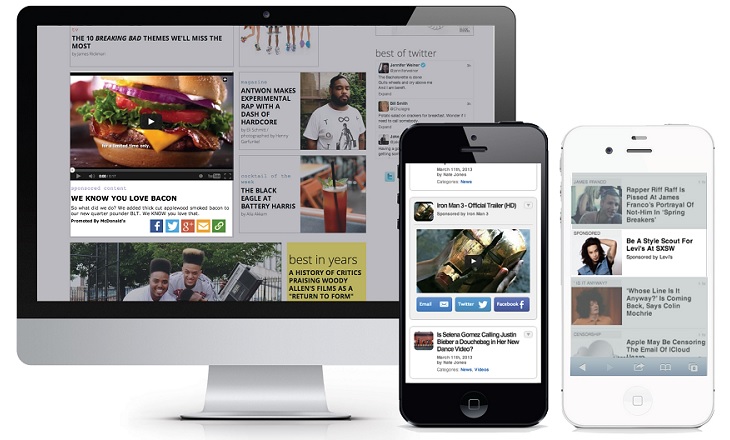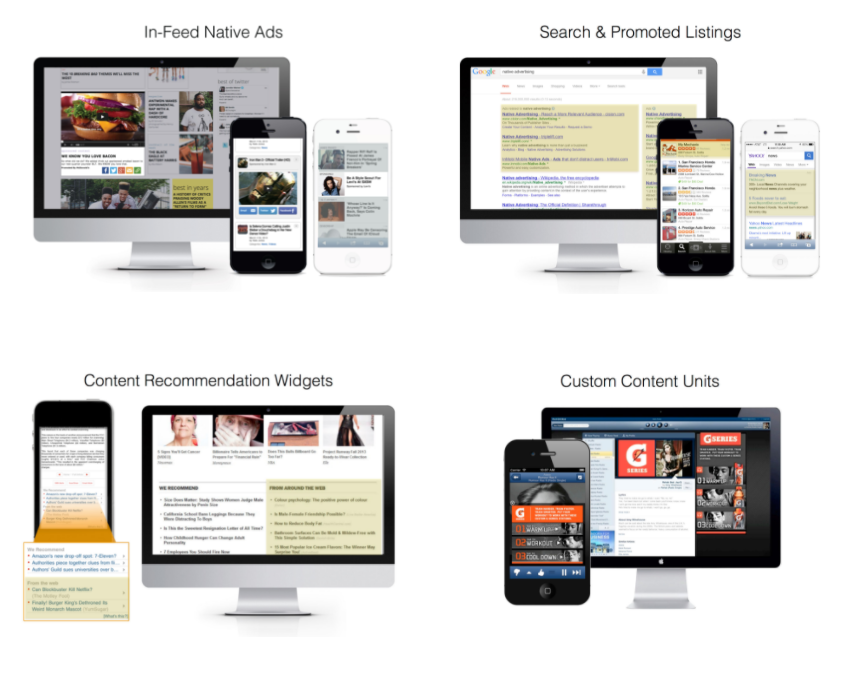The following article was written by Adinah Brown, content manager at Leverate.
In 2015, The New York Times, in partnership with Chartbeat, conducted a study on the effectiveness of its native advertising platform, Paid Posts, with regards to reader engagement and overall audience response. It found that 50% of its Paid Posts content outperformed in-house editorial content. According to representatives from the Times and Chartbeat, the results suggest two things:
One, audiences engage with high-quality content regardless of its origin; and two, it is possible to deliver a marketing goal without sacrificing content quality, and that in accomplishing that, advertisers could reap lots of benefits.
This is what makes native advertising so appealing across industries. If this is your first time encountering the term, however, this article could provide a solid foundation on the subject.
The Tenets of Native Advertising: Organic and Targeted
Native advertising is a type of paid content campaign. It focuses on producing content that blends naturally into the editorial environment of the platform in which it appears. That it camouflages itself amongst editorial content is necessary because audiences have an instinctual aversion to ads and would otherwise avoid reading or clicking on it.
A majority of Internet users avert their eyes from ad banners or skip pop-up advertisements, if not block them entirely. This is because anything appearing on a website that is irrelevant to the page’s native content (e.g., a taco ad or blog post inserted in a website discussing forex trading) is jarring to the reader and breaks their browsing flow. This type of content will have a significantly lower chance of generating conversions.
Hence, the goal of native advertising is to appear as organic or as “native” as possible alongside the text it appears with.
When the audience is considered, native advertisements are, by nature, targeted campaigns. In choosing a blog or industry publication to publish a native ad, for example, you as the advertiser are choosing that blog’s audience base as its target audience as well.
Social media enhances this targeted system by allowing marketers to promote that native content with ads or posts boosted by selecting the appropriate ad settings (e.g. geographic location, age group, interests).
Done correctly, native advertising flows seamlessly in the platform where publishers deploy them. This means that to the right group of people, this content won’t seem like just an ad, but rather like valuable and relevant content that happens to be linked to a brand. Targeted audiences perceive native ads as having value, thus leading to conversions.
There is more than one way to skin a cat
According to the IAB Native Advertising Task Force there are various native ad formats.
Start Strong: Choose a Platform Frequented by Your Target Market
The success of a native advertising campaign depends greatly on the authority of your chosen platform, for several reasons:
- Audiences regard content in authority sites as reliable and valid.
- Authority websites have high traffic, which may translate to conversions for the advertiser.
- The environment of the website dictates the tone of the native ad.
While advertisers need to ensure that the ad will deliver its message, whether it’s a call to action or brand awareness campaign, publishers, must perform a quality check. Some publications are more discriminatory than others when it comes to the type of content they accept for publication. They need to make sure that the content blends well with the site’s overall character, both in context and layout.
The native advertising, whether it be an ad, an article, a video, an infographic, or a slideshow, can be produced either by the advertiser or by the publisher.
Once you find the right platform to host your native advertising content, start promoting it on your own site as well. Facebook, Instagram and Twitter allow companies to integrate ads into the timelines of targeted audiences. If your business or industry matches a user’s interests, recent searches, and page interactions, your ad will appear on their feeds. Simply create an ad promoting the content you have hosted in an industry publication to increase the number of readers.
Applications within the Financial Industry
As with any digital marketing strategy, no single winning combination will work for every business and industry.
That being said, the financial sector has historically benefited more from sponsored content. It adheres to the industry’s image of credibility and professionalism. Furthermore, research shows that audiences are responding positively to it. They get lots of views, audience interaction, and conversions.
To make sponsored content work, you can provide valuable information that your target market is likely to be searching. It could be segments of your published book on Forex trading, discussions on strategies, empirical predictions on industry trends, or video seminars. Avoid hard-selling or giving zero-value content. A study shows that audiences view this type of sponsored content as deceiving and equivalent to clickbait.
Audiences that find your content valuable are likely to follow your call to action, visit your website, or use you as a reference in their own write-ups. Any of these responses will benefit your business since they contribute to website traffic, conversions, and brand awareness.

